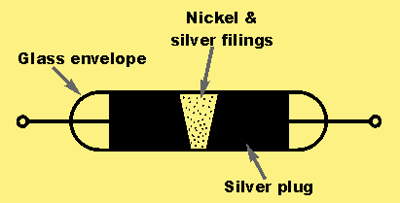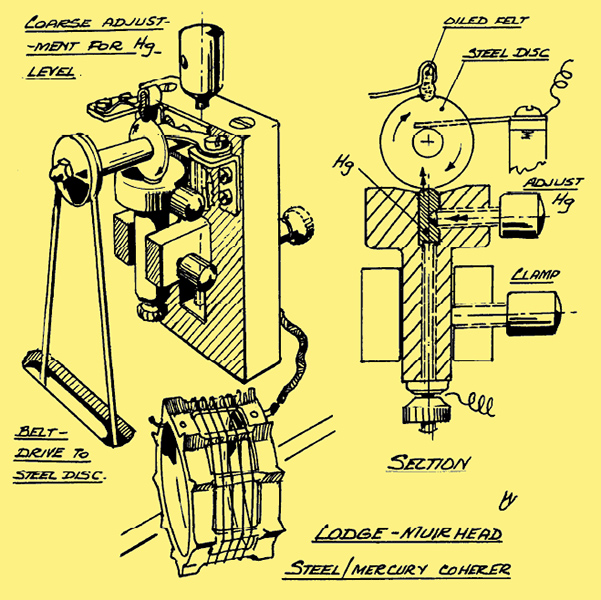|
Coherers

Coherer as used by Marconi.
Coherers are temperamental electro-mechanical devices that work by arranging for a conduction path to be established by an RF signal which is then used to conduct DC. Marconi's version consisted of fine nickel and silver filings contained in a partial vacuum between two electrodes. The resistance between the electrodes is largely determined by the number and nature of inter-filing contact points and drops markedly if an RF signal is applied between the ends.

Coherer as used by Marconi. Image courtesy Wikipedia.
The coherer does not reset itself and needs to be struck to shake the filings loose again. A relay could be connected and would close in the presence of a signal allowing for the reception of telegraphy.

Drawing of Lodge-Muirhead Coherer. Image courtesy BVWS. Bulletin Vol 15 no. 2
Others coherers were used for telephony. One example is the Lodge Muirhead type which consisted of a bowl of mercury covered in a thin film of oil. A rotating sharp-edged iron disc was lowered into the mercury to almost - but not quite - break the oil layer. The RF signal would break the layer and allow conduction. Unlike the filings-based coherer, this device was self resetting.
|